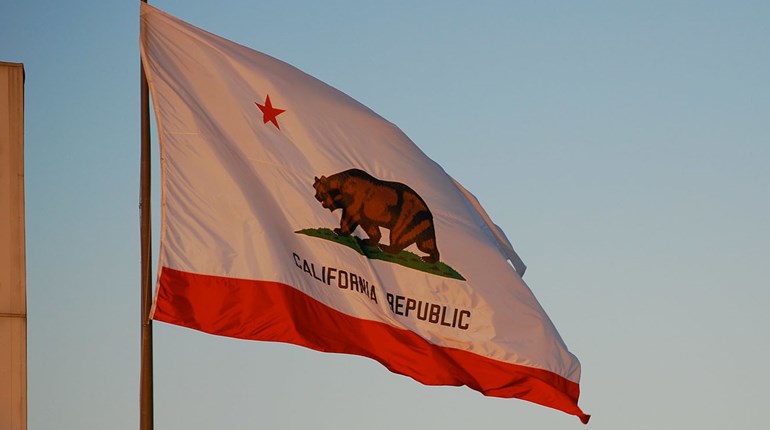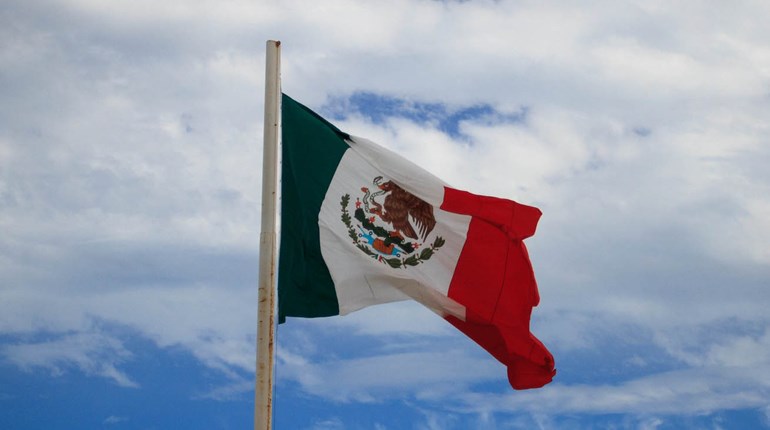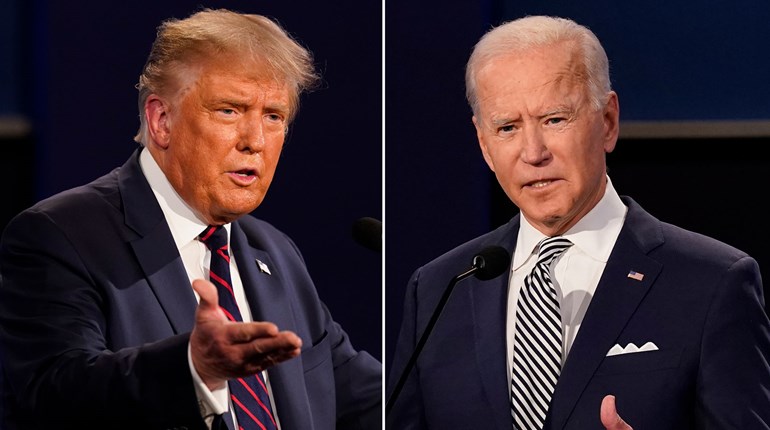
1975: The NRA Institute for Legislative Action (ILA) was formed. ILA is the lobbying arm of the NRA. ILA is committed to preserving the right of all law-abiding individuals to purchase, possess and use firearms for legitimate purposes as guaranteed by the Second Amendment to the U.S. Constitution. ILA’s ability to fight successfully for the rights of America’s law-abiding gun owners directly reflects the support of the NRA’s more than 5 million members—a number that has more than tripled since 1978. When restrictive gun-control legislation is proposed at the local, state or federal level, NRA members and supporters are alerted and respond with individual letters, faxes, emails and calls to their elected representatives to make their views known.
NRA-ILA is also involved in educating the public about the facts concerning the many facets of firearm ownership in America. Through the distribution of millions of printed fact sheets, brochures and articles annually and the posting of information and the latest news daily on its website (nraila.org), ILA provides facts about responsible firearm ownership, the Second Amendment and other topics.
Today, ILA employs a staff of more than 80, with a team of full-time lobbyists defending Second Amendment issues on Capitol Hill, in state legislatures and in local government bodies.
1981: From 1981 through 1991, the NRA helped bring the number of states with firearm-preemption laws to 41. Today, 45 states limit the authority of municipalities to regulate firearms and ammunition. These laws generally preclude local governments from enacting any additional regulations on firearms or ammunition beyond state law. Without firearm preemption, gun owners would be subjected to a patchwork of hundreds or even thousands of different sets of laws in every state. Before the 1980s, only three states had passed or confirmed, through litigation, firearm preemption laws.
 1986: Years of NRA-ILA lobbying led to the Firearms Owners’ Protection Act of 1986 being signed into law by President Ronald Reagan. ILA worked for more than a decade to secure passage of this historic legislation in order to reform the Gun Control Act of 1968. Remember, before your NRA worked to change that law, every violation was a federal felony and you didn’t even need to have any intent to break the law. The government could enter a gun store every day simply to harass them out of business.
1986: Years of NRA-ILA lobbying led to the Firearms Owners’ Protection Act of 1986 being signed into law by President Ronald Reagan. ILA worked for more than a decade to secure passage of this historic legislation in order to reform the Gun Control Act of 1968. Remember, before your NRA worked to change that law, every violation was a federal felony and you didn’t even need to have any intent to break the law. The government could enter a gun store every day simply to harass them out of business.
1988: Marion P. Hammer, who would be NRA president from 1995-1998, spearheaded the Eddie Eagle GunSafe program with a task force made up of educators, school administrators, curriculum specialists, urban housing safety officials, clinical psychologists, law-enforcement officials and NRA firearm safety experts. Since then, it has reached more than 31 million children in all 50 states, Canada and Puerto Rico.
1994: Since 1994, the number of states that have range-protection laws has risen from eight to 48 thanks to lobbying from NRA-ILA. Gun-control activists have often tried to diminish our rights by trying to ban shooting ranges. Without ranges, responsible firearm owners have very little opportunity to shoot or to introduce others to shooting sports. When it was clear that those who despise the Second Amendment had targeted ranges with nuisance lawsuits and local “zoning” ordinances, the NRA began promoting range-protection laws. These laws are especially useful for established ranges, as they prevent local governments from forcing them to close down because they cannot comply with new noise ordinances or construction requirements that are put in place years (and sometimes decades) after the range was established in compliance with local zoning laws.
1996: Since 2002, the National Institutes of Health (NIH) has spent nearly $5 million on “research” designed to push gun control—even though their counterparts at the CDC have been prevented from funding similar studies since being blocked in 1996 by an NRA-backed provision.
2000: The NRA helped secure the White House victory for George W. Bush. In 2000, Al Gore made restricting your right to keep and bear arms a major part of his campaign platform. The NRA rallied members by letting American voters know what Gore would do; as a result, Gore lost his own state and, with it, the election.
2004: The NRA opposed renewal of the Federal Assault Weapons Ban of 1994. The ban expired on Sept. 13, 2004.
2005: President George W. Bush signed the NRA-backed Protection of Lawful Commerce in Arms Act (PLCAA), which prevents firearms manufacturers and dealers from being held liable for negligence when crimes have been committed with their products. The PLCAA saved the American firearms industry from certain bankruptcy and elimination by passing lawsuit protection. Keep in mind that the anti-gun groups were suing America’s manufacturers every time a criminal unlawfully used a firearm. This was burying the industry in legal fees and insurance problems, leading to possible bankruptcy for American gun makers.
2005: The NRA helped enact the nation’s first Stand-Your-Ground law in Florida. Today, 27 states have Stand-Your-Ground laws, and another seven states have Stand-Your-Ground laws in practice, either through case law, precedent or via jury instructions.
2005: During and just after Hurricane Katrina, local government officials in New Orleans took guns from law-abiding people, leaving them defenseless in the chaos and darkness. The NRA moved to stop this from ever happening again. Since Katrina, the NRA has worked to pass such protections in 33 states. In 2006, Congress passed the Disaster Recovery Personal Protection Act to prevent the government from seizing legally-owned firearms during times of a declared state of emergency.
2005: The NRA and other gun advocates filed a lawsuit challenging San Francisco Proposition H, which banned the ownership and sales of firearms. The NRA argued that the proposition overstepped local government authority and intruded into an area regulated by the state. The San Francisco County Superior Court agreed with the NRA position. The city appealed the court’s ruling, but lost a 2008 appeal.
2008: San Francisco was forced to pay a $380,000 settlement to the NRA and other plaintiffs to cover the costs of litigating Proposition H.
2008: The NRA filed a friend-of-the-court brief with the U.S. Supreme Court in the 2008 landmark gun-rights case District of Columbia v. Heller. In a 5-4 vote, the U.S. Supreme Court ruled that the District of Columbia’s gun laws were unconstitutional, and for the first time held that an individual’s right to a gun was unconnected to service in a militia. Some legal scholars believe the NRA was influential in altering the public’s interpretation of the Second Amendment, providing the foundation for the majority’s opinion in Heller.
2009: The NRA again filed suit (Guy Montag Doe v. San Francisco Housing Authority) in the city of San Francisco challenging the city’s ban of guns in public housing. On
Jan. 14, 2009, the San Francisco Housing Authority (SFHA) reached a settlement with the NRA, which allows residents to possess legal firearms within a SFHA apartment building.
2009: NRA-ILA successfully legalized the carrying of firearms for self-defense in national parks and fish and wildlife refuges; however, land managed by the Army Corps of Engineers was not included in this legislation. NRA-ILA is lobbying for the right to carry on the Army Corps’ 13 million acres.
2009: NRA-ILA worked to preserve the opportunity for American gun owners to purchase surplus firearms that were no longer of use to the U.S. military. This included M-1 Carbines, M-1 Garand rifles, M-14 rifles, .22-caliber rifles, .30-caliber rifles and M-1911 pistols. Starting in 1979, different versions of this measure’s language have prevented these firearms from being needlessly destroyed. In 2009, Congress amended this language, at the urging of NRA-ILA, to prevent the destruction of spent brass casings. This is especially important to gun owners and reloaders concerned about the rising price of ammunition.
2010: The NRA sued the city of Chicago, Ill., (McDonald v. Chicago), and the U.S. Supreme Court ruled that, like other substantive rights, the right to bear arms is incorporated via the Fourteenth Amendment to the Bill of Rights, and therefore applies to the states.
2013: The NRA joined a federal lawsuit with other gun-rights groups challenging New York’s gun-control law (the NY SAFE Act), arguing that N.Y. Gov. Andrew Cuomo “usurped the legislative and democratic process” in passing the law, which included restrictions on magazine capacity and expanded the state’s “assault weapons” ban.
2013: The Obama administration instituted “Operation Choke Point,” in which various federal regulators, including the U.S. Department of Justice, the Federal Deposit Insurance Corporation and the Office of the Comptroller of the Currency at the Treasury Department, used their ratings and enforcement authorities to intimidate banks into refusing or severing business relationships with lawful, though politically disfavored, industries, including those involving firearms and ammunition. NRA-ILA exposed this unfair attack on the legitimate relationship America’s gun makers and dealers have with financial institutions. Thanks to NRA-ILA lobbying, under President Donald J. Trump, this operation was formally axed.
2014: The NRA lobbied and saw a bill in Pennsylvania passed that grants it and other advocacy groups legal standing to sue municipalities with local firearm regulations violating state laws preempting such regulations, and also allows the court to force cities to pay their legal fees. As soon as it became law, the NRA sued three cities: Philadelphia, Pittsburgh and Lancaster.
2015: The NRA began lobbying aggressively for “National Right-to-Carry Reciprocity” laws. In 2015, numerous right-to-carry bills were introduced in the U.S. House of Representatives and one in the U.S. Senate. While all the bills are slightly different, NRA supported them all. The NRA is still working to achieve this important goal.
2016: Following the terrorist attack in Orlando, Fla., on June 12, 2016, U.S. Sen. Chris Murphy (D-CT) took to the Senate floor to filibuster the Commerce-Science-Justice Appropriations bill to talk about gun control. During his filibuster, Sen. Murphy demanded a vote on an amendment to prohibit individuals on the Terrorist Watch List from purchasing a firearm as well as a vote on an amendment to implement a “universal” background check system. The NRA opposed this amendment and it failed overwhelmingly.
2016: The NRA’s Political Victory Fund raised a record $366 million to fight for your freedom. The NRA also maintains a PAC that is separate from these figures. The organization donated to congressional races for both Republicans (223) and Democrats (9). The NRA also endorsed Donald J. Trump in the 2016 U.S. presidential election after Hillary Clinton made it clear she wanted to take away much of this American freedom. In the 2016 presidential election, the NRA reported spending more than $60 million in support of Trump.
2017: Rep. Jeff Duncan (R-S.C.) introduced the NRA-ILA-backed Hearing Protection Act (HPA) of 2017. This bill would remove sound suppressors from regulation under the National Firearms Act (NFA), leaving them to be treated as ordinary firearms subject to the usual National Instant Criminal Background Check System (NICS) check and Form 4473 for dealer sales. Also in 2017, Sen. Mike Lee (R-Utah) introduced similar legislation in the U.S. Senate.
2017: Rep. Morgan Griffith (R-Va.) introduced NRA-ILA-backed H.R. 358, a bill to more comprehensively address the interstate transportation of firearms and ammunition. Sen. Orrin Hatch (R-Utah) introduced the Senate companion bill.
2017: President Trump signed the NRA-backed National Defense Authorization Act (NDAA) Conference Report for Fiscal Year 2018 into law. This law includes a provision that directs the Secretary of Army to transfer surplus 1911 .45 ACP pistols to the Civilian Marksmanship Program (CMP). As of November 16, 2018, CMP has received 8,000 surplus 1911s and is in the process of administering a random lottery auction for qualified applicants; the auction date has not been scheduled. The transfer of these historically-significant firearms eases the burden on the government’s heavily indebted balance sheet, in addition to allowing the CMP to keep revenues from the 1911 sales, ensuring CMP funding for the future.
2017-2018: NRA-ILA supported President Trump’s U.S. Supreme Court nominations and the confirmations of Justices Brett Kavanaugh and Neil Gorsuch.
2018: U.S. Sen. Chuck Grassley (R-Iowa) introduced the Veterans’ Second Amendment Protection Act of 2018. This bill would require the government to prove that a veteran is a danger to self or others before the Department of Veterans Affairs can report a veteran’s name to the U.S. Department of Justice for placement in the NICS.
2018: On March 14, 2018, the U.S. House of Representatives passed the “STOP School Violence Act of 2018,” sponsored by Rep. John Rutherford (R-Fla.) by a vote of 407-10; Sen. Orrin Hatch (R-Utah) introduced a companion bill in the U.S. Senate. This legislation provides funding for training students, teachers, school administrators and local law enforcement to identify early warning signs that a person is a threat to themselves or others. The bill also provides funds to implement school threat-assessment procedures and create a coordinated violence-prevention reporting system. This legislation was included in the Omnibus Appropriations Act of 2018 and signed into law by President Trump on March 23, 2018.
2019: The New York State Rifle & Pistol Association (NYSRPA) filed its main brief in the U.S. Supreme Court case NYSRPA, et al. v. the City of New York and the New York City Police Department-License Division. The NRA-supported case challenges a New York City ordinance that violates the Second Amendment rights of law-abiding New York City residents by restricting lawful travel with firearms outside of city limits.
2019: The NRA is again suing the city of San Francisco, this time for officially deeming the NRA to be a “domestic terrorist organization” and for attacking the First Amendment-protected right to freely associate. This resolution from the San Francisco Board of Supervisors says “the City and County of San Francisco should take every reasonable step to limit those entities who do business with the City and County of San Francisco from doing business with this domestic terrorist organization.” The NRA’s lawsuit pointed out that the San Francisco Board of Supervisors’ declaration discriminates against people “based on the viewpoint of their political speech.”
2019: As a result of backing President Donald J. Trump, we now have a solid pro-Second Amendment majority on the Supreme Court with the addition of Justices Kavanaugh and Gorsuch. President Trump has also filled the lower courts with 150 judges and counting.
Since 1990: The NRA helped pass shall-issue carry laws and constitutional-carry laws across America, enabling Americans to lawfully carry firearms for personal protection in almost every state.
A lot has been achieved in just the last 30 years:
1990: Just 16 states allowed for concealed carry with or without a permit; today, 42 states have either unrestricted concealed carry or are shall-issue states.
1990: Just one state allowed concealed carry without a permit; today, 16 states allow concealed carry without a permit.
1990: Fifteen states had shall-issue policies; today, 26 states have shall-issue policies for concealed carry.
1990: Twenty states had may-issue policies for a concealed-carry permit that gave law-enforcement discretion in the awarding of licenses; today, there are only eight may-issue states.
• The number of states that do not allow concealed carry fell from 14 in 1990 to zero in 2019.
• Through the NRA’s efforts, 34 states now have a no-retreat requirement before a person may exercise their right to lawful self-defense.
• Outright recognition is always the NRA’s goal, and 21 states now recognize permits issued by other states.


































